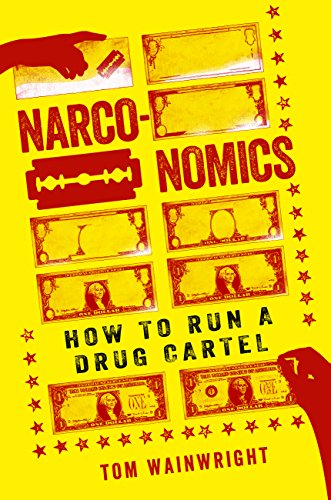Narconomics: How to Run a Drug Cartel

The author Tom Wainwright (an editor at The Economist) explores the narcotics industry through an economist’s perspective. Based on the economics of cartel operations, the book offers insights on the underlying incentives of the players and the dynamics of the industry and provides interesting ideas about potentially more effective policies in this area.
Key ideas:
As I followed the trafficking trail, I noticed four big economic mistakes that governments everywhere from La Paz to London keep on making.
First, there is an overwhelming focus on suppressing the supply side of the business, when basic economics suggests that addressing demand would make more sense. Cutting supply has done more to raise prices than it has to reduce the amount of drugs consumed, resulting in a more valuable criminal market.
Note: obsession on supply side isn’t effective because:
- drug cartels act as monopsony, fixing price on raw material pushing cost to farmers
- raw supply constitutes extremely small portion of overall value of final sale (<0.1%); if focus on supply side, it should be done at the very end where it could result in some actual economic impact
- inelastic demand of drugs due to addition (prince increase -> small decrease in demand -> market value increases, things would work in reverse if focus is on the demand side)
Second, there is a constant and damaging short-termism, in which governments economize on early interventions, preferring to run up bigger bills further down the line. Prisoner rehabilitation, job creation, and treatment for addiction are among the first programs to be cut when budgets are tight, while front-line enforcement, which accomplishes the same goal at a higher cost, seems to enjoy spending without end.
Note: prevention vs enforcement; development vs policing; offering social welfare vs focusing on punitive actions
- drug cartels act as monopsony, fixing price on raw material pushing cost to farmers
- raw supply constitutes extremely small portion of overall value of final sale (<0.1%); if focus on supply side, it should be done at the very end where it could result in some actual economic impact
- inelastic demand of drugs due to addition (prince increase -> small decrease in demand -> market value increases, things would work in reverse if focus is on the demand side)
Third, even though the drug cartels are models of nimble, borderless global commerce, efforts to regulate them are still clumsily national in scope. The result is that the industry survives by slipping from one jurisdiction to another, easily outwitting the uncoordinated efforts of different countries.
Note: as the line between supplier country and consumer country blurs, i18n is well underway
Finally, and most fundamentally, governments mistakenly equate prohibition with control. Banning drugs, which seems sensible at first, has handed the exclusive rights to a multibillion-dollar industry to the most ruthless organized crime networks in the world. The more I learned about the way the cartels do business, the more I wondered if legalization, far from being a gift to the gangsters, could be their undoing.
Note: interesting points on “prohibition != control”, and cool example with New Zealand’s heroin legalization.
The following chapters will add flesh to these arguments. But the bottom line is this: predicting the cartels’ next steps, and making sure that the money and lives laid down to stop them are not wasted, is easier when we recognize that they are run like other big multinational companies. This book is a business manual for drug lords. But it is also a blueprint for how to defeat them.
Leave a comment